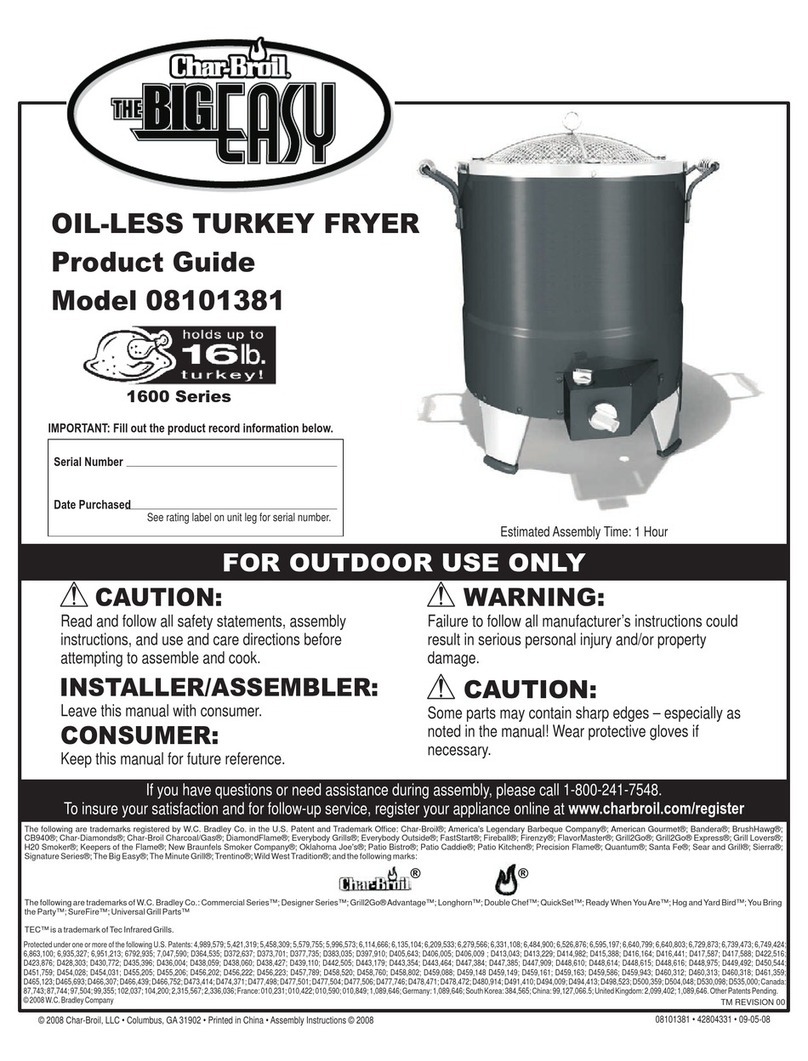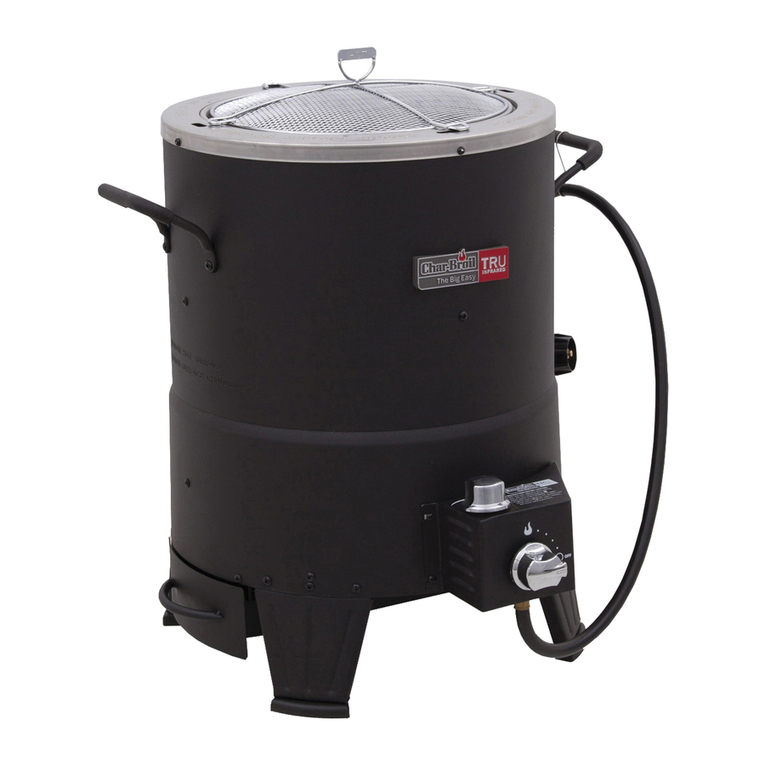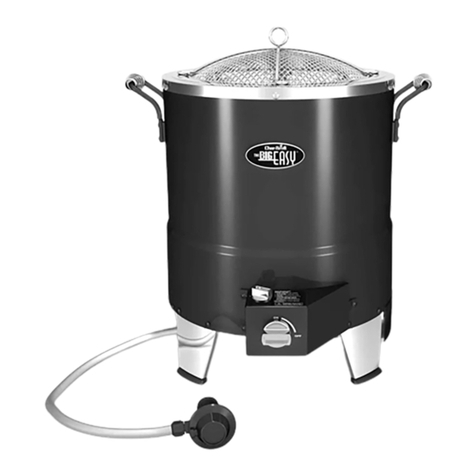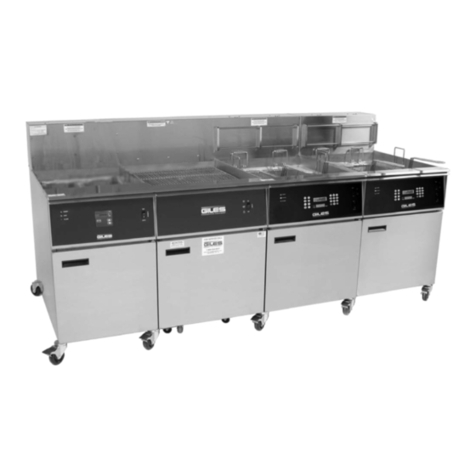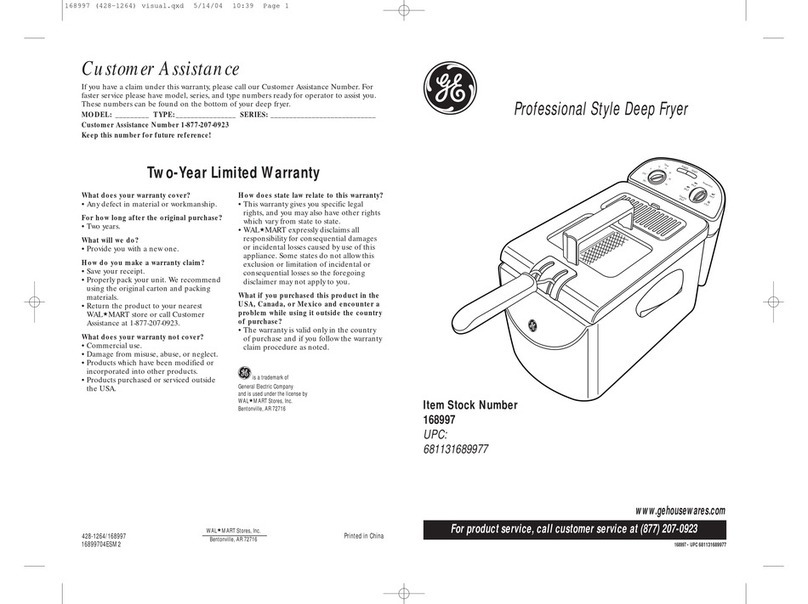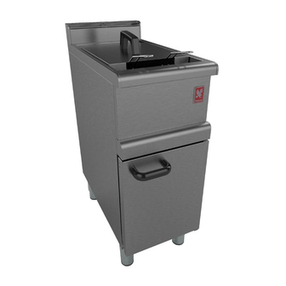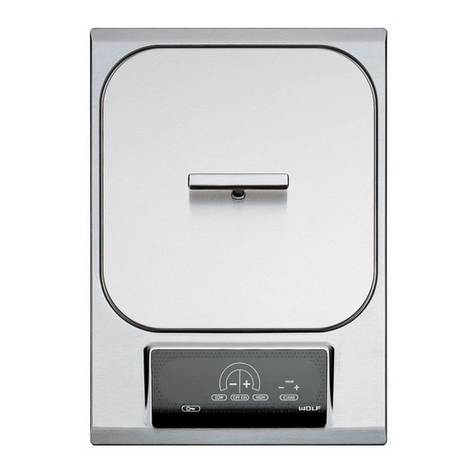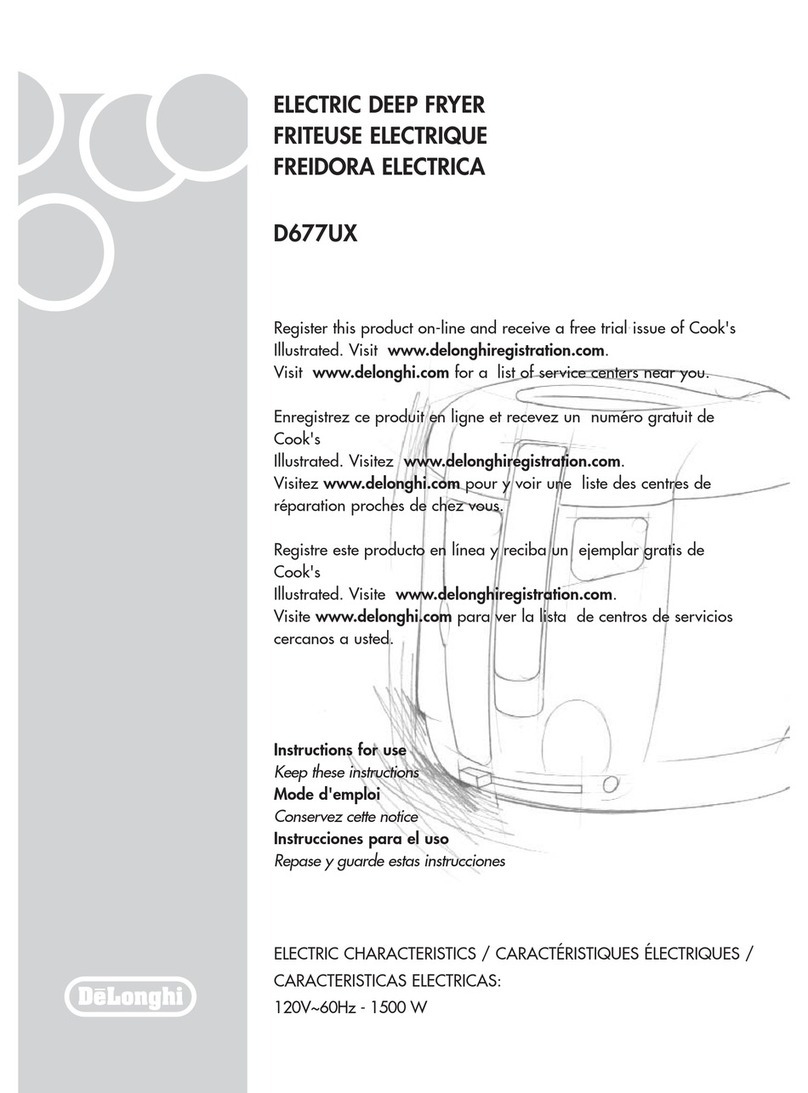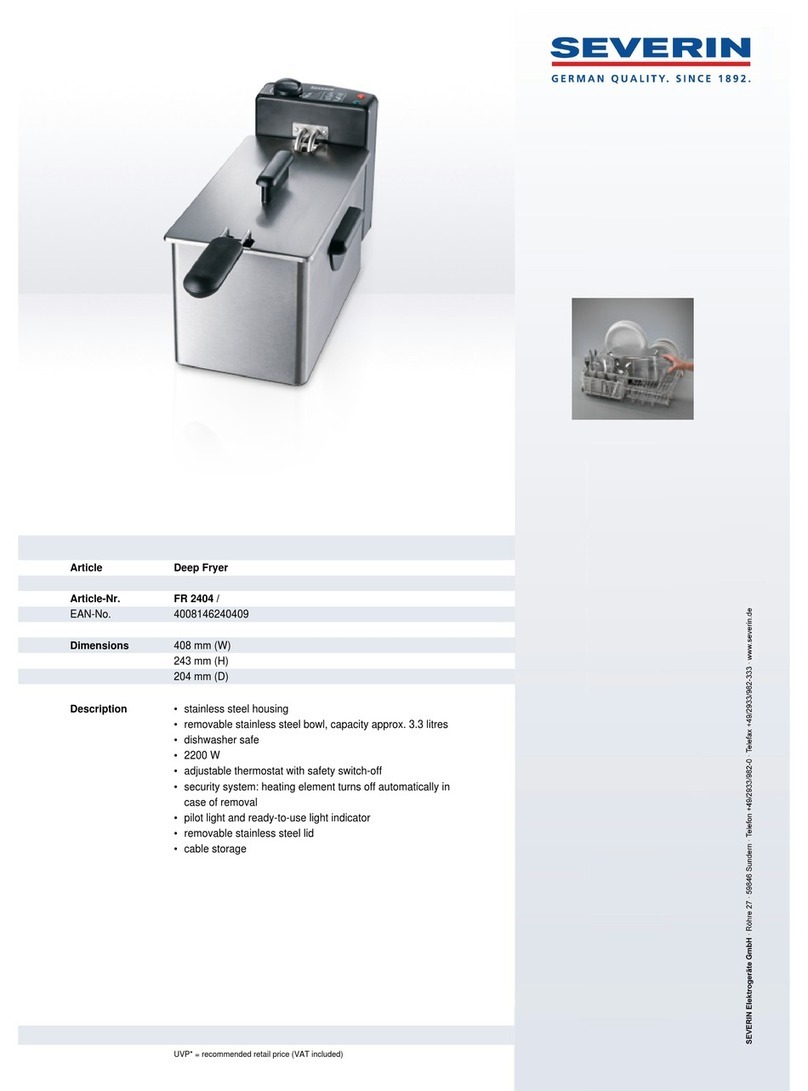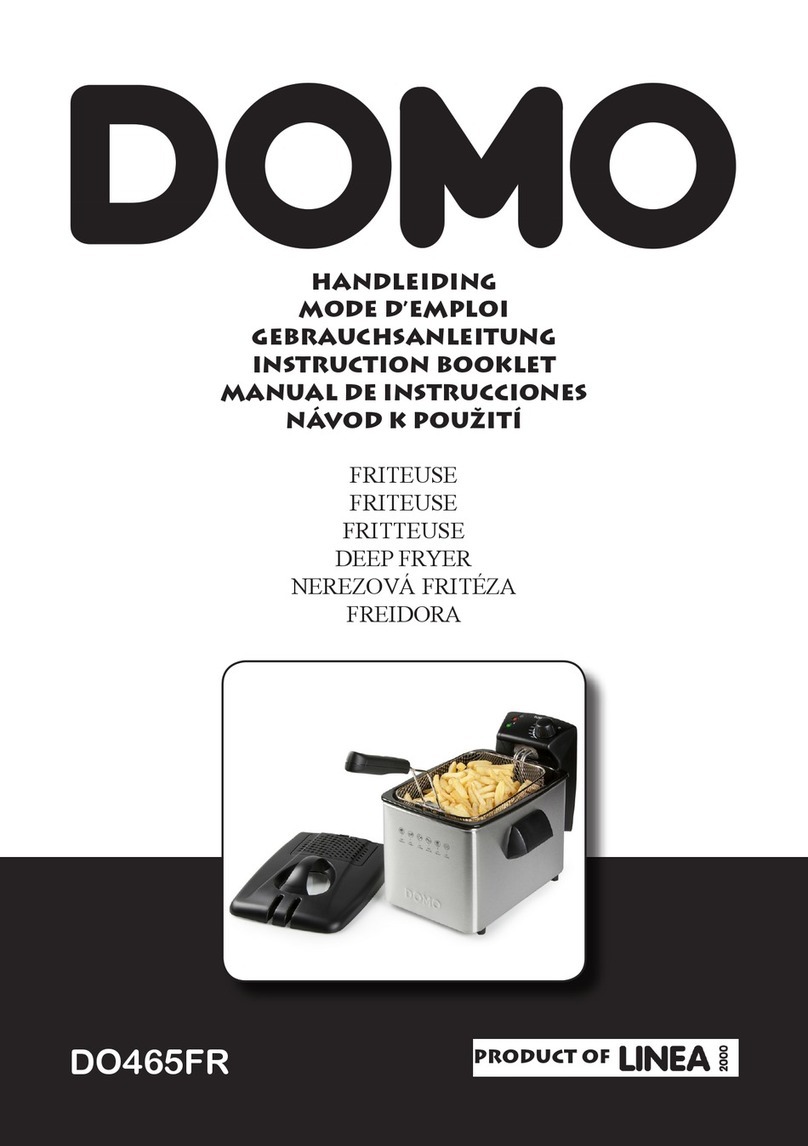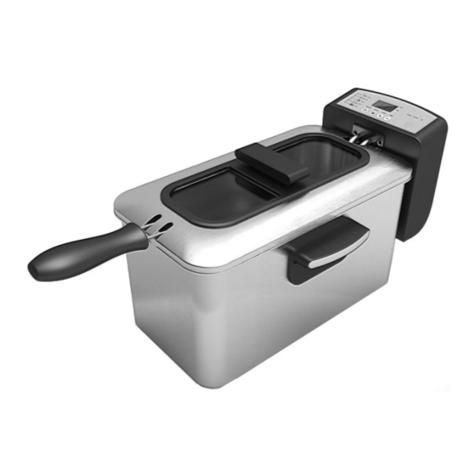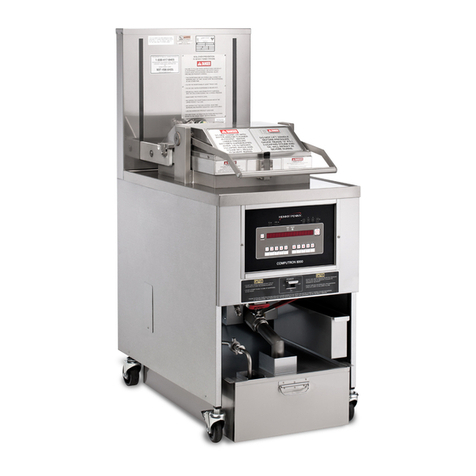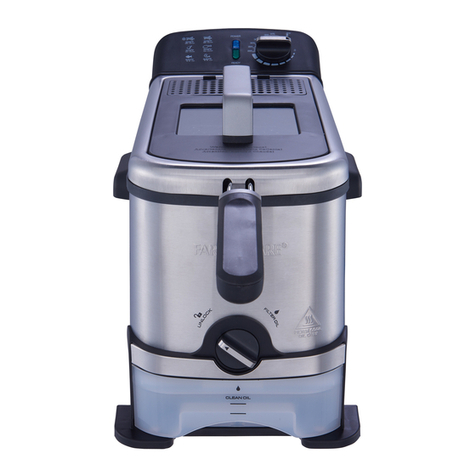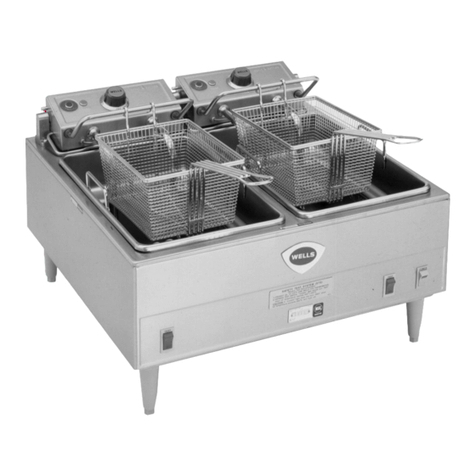
4
WARNING
1. Never leave the appliance unattended. Keep children and pets away from the
appliance at all times.
2. The use of alcohol, prescription or non-prescription drugs may impair the
consumer’s ability to properly assemble or safely operate the appliance.
3. This appliance is for OUTDOOR use only. Do NOT use in a building, garage or
any other enclosed area. Do NOT use in or on a recreational vehicle or boat.
NEVER use this appliance as a heater.
4. When cooking, the appliance must be on a level, stable noncombustible
surface in an area clear of combustible material. An asphalt surface (blacktop)
may not be acceptable for this purpose.
5. Keep the fuel supply hose away from any heated surfaces.
6. When cooking with oil or grease, the thermometer provided MUST be used.
Follow instructions in this manual for proper installation and use of the
thermometer. If the thermometer supplied with this appliance has been lost or
damaged, a replacement thermometer meeting or exceeding the appliance
manufacturer specifications shall be obtained before using the appliance.
7. If the temperature exceeds 400°F (200°C) or if oil begins to smoke, immediately
turn the burner or gas supply OFF and wait for the temperature to decrease to
less than 350°F (175°C) before relighting burner according to the
manufacturer’s instructions. If there is a lid (cover), do not remove the lid.
8. In the event of an oil/grease fire immediately call the fire department. Do not
attempt to extinguish with water. When cooking with oil/grease, have a Type
BC or ABC fire extinguisher readily available. A Type BC or ABC fire
extinguisher may, in some circumstances, contain the fire.
9. Never overfill the cooking vessel with oil, grease or water. Follow instructions
in this manual for establishing proper oil, grease or water levels.
10. Introduction of water or ice from any source into the oil/grease may cause
overflow and severe burns from hot oil and water splatter. When cooking with
oil/grease, all food products MUST be completely thawed and towel dried
before being immersed in the cooking vessel.
11. Do not place empty cooking vessel on the appliance while in operation. Use
caution when placing anything in cooking vessel while the appliance is in
operation.
12. In the event of rain, snow, hail, sleet or other forms of precipitation while
cooking with oil/grease, cover the cooking vessel immediately and turn off the
appliance burners and gas supply. Do not attempt to move the appliance or
cooking vessel.
13. Do not move the appliance when in use. Allow the cooking vessel to cool to
115 before moving or storing.°F (45°C)

